Halo: Nightfall Second Stories
343 Industries . Halo Nightfall . November 2014
Resilient Unto The Night
Halo: Nightfall second stories were created along side the main narrative. Production of these stories began while the script was being written and then adapted as the production naturally shifted.
Early in the production of the Halo Channel, the guiding principle was to create an interactive platform that extended linear television series. The challenge lay in creating a reward mechanism that would be compelling enough to drive individuals to this new Halo Channel platform. The fundamental question was, "How can we reward individuals who solely care about the television series and do not engage with the game?"
Consider yourself a Game of Thrones fan - what would be the ultimate reward for your viewership? Ideally, it would entail receiving more of the content you already enjoy: more Game of Thrones. Furthermore, what if the additional story we provide you with significantly impacted the actual television show? What if we created something that offered a deeper understanding of the aspects of the show that the main narrative lacks the time to explore?
These ideas served as the guiding principles that led us to develop “Second Stories.” Our aim was to reward people with more of the content they already love.
Directors: Dan Chosich, Terry Loane
Executive Producer: Ridley Scott
Executive Producer: Kiki Wolfkill
Executive Producer: David Zucker
2nd Unit Producer: Ingrid Goodwin
2nd Unit A.D.: Keith Browett
Director of Photography: Mark Garrett
2nd Director of Photography: Dan Chosich
Editor: Dan Chosich
Sound Editor: Dan Chosich
2D Graphic Design: Christopher Abbas
3D Graphics: Dan Chosich
Writers: Dan Chosich, Frank O'Connor, Jeremy Patenaude, Terry Loane
View All Films
Topic Formation
The way the second stories, and eventually their counterpart--ONI Eyes, were written was by examining versions of the main narrative's script as they game in. In the script, I would search for places where it would make sense for stories to branch. Areas where more story could be told and where it would be logical for more stories to be told. The nature of Halo: Nightfall created a boundary in that the first 30 minutes are located on a colony much like earth. The next 60 minutes is spent in a location where no electricity is supposed to exist. This segregated most of the stories to the first 30 minutes. This limitation was good because it allowed us to explain the inciting incident in greater detail.
Cinematic Format
Second Story
Second Stories had a few ground rules. They had to use the main cast. They were more cinematic, featuring multiple shots from multiple angles. For the lack of a better term, they could be thought of as 'Deleted Scenes.' The hope was that they were meaningful enough that they didn't feel like deleted scenes but like rewards unto themselves that extend the viewers knowledge base of character motivations or happenings in the greater world.
Direct-Address Format
Oni Eyes
Moments that tip the scales. Stories that shape beliefs. Narrated by those who have experienced them. These are the events on the periphery. This concise statement encapsulates their essence. However, it is important to note that they also adhered to certain 'rules'. The objective was to make them appear as intercepted transmissions.
There were two distinct storytelling mechanisms at play. Firstly, the direct address format akin to FaceTime calls or MTV's Real World confessionals. Secondly, an omnipresent computer watched alongside the viewer, flagging and recording moments where the speaker uttered something deemed hazardous to security. This mysterious element begs the question of why the government classified some of these messages as sensitive and erased all evidence of their existence.
Voyeuristic + Found Footage Tone
ONI Eyes feels like stumbling upon private files. They have ONI case numbers and on-screen graphics that report time and location. Why ONI has kept them may not be understood. ONI Eyes does not need to answer questions but it should seed mystery, provide levity, or deepen and allude to concepts in the main linear or a future game.
Not Bound by Style
The approach is what can make this interesting.
• Who are the people telling these shorts and what do they care about?
• What is their perspective as to how the world works?
• Are they a willing participant or a victim of chance, environment, or desire?
Writer Breakdown
Seed of Honor - Terry Loane
Soldier Within - Terry Loane
The Path of Belief - Terry Loane
Exposure - Dan Chosich
Compliance - Dan Chosich
Trade Barriers - Dan Chosich
Indebted Travelers - Dan Chosich
Unit-54 - Frank O'Connor
Quartermaster - Frank O'Connor
Walk the Path - Frank O'Connor
Rhoen Border Security - Jeremy Patenaude
Cooperative Protocol - Jeremy Patenaude
Recon-14 - Jeremy Patenaude
Cargo P1 + P2 - Jeremy Patenaude
Recon-14 . Behind the Scenes
UNIT-54. Behind the Scenes




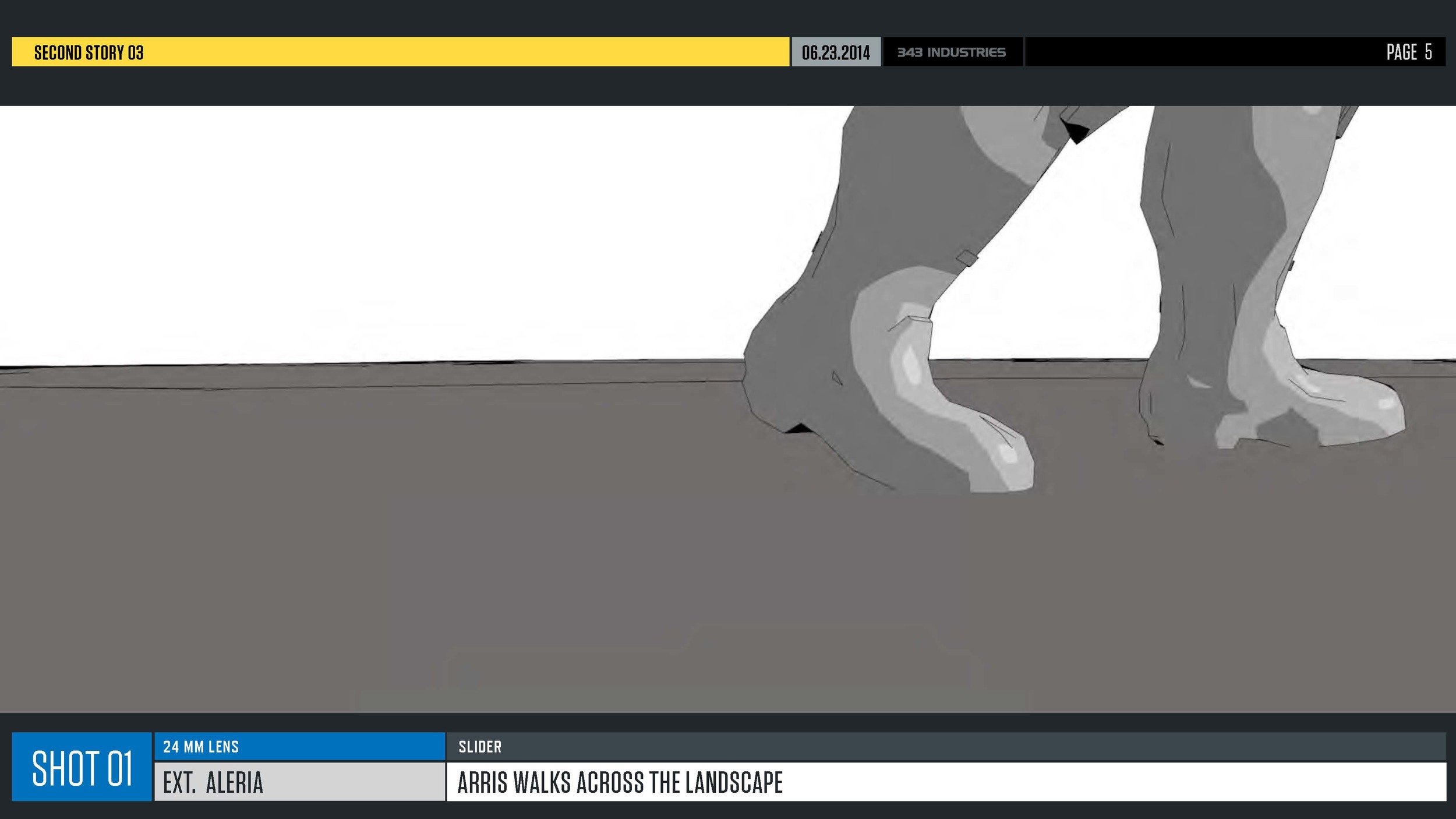



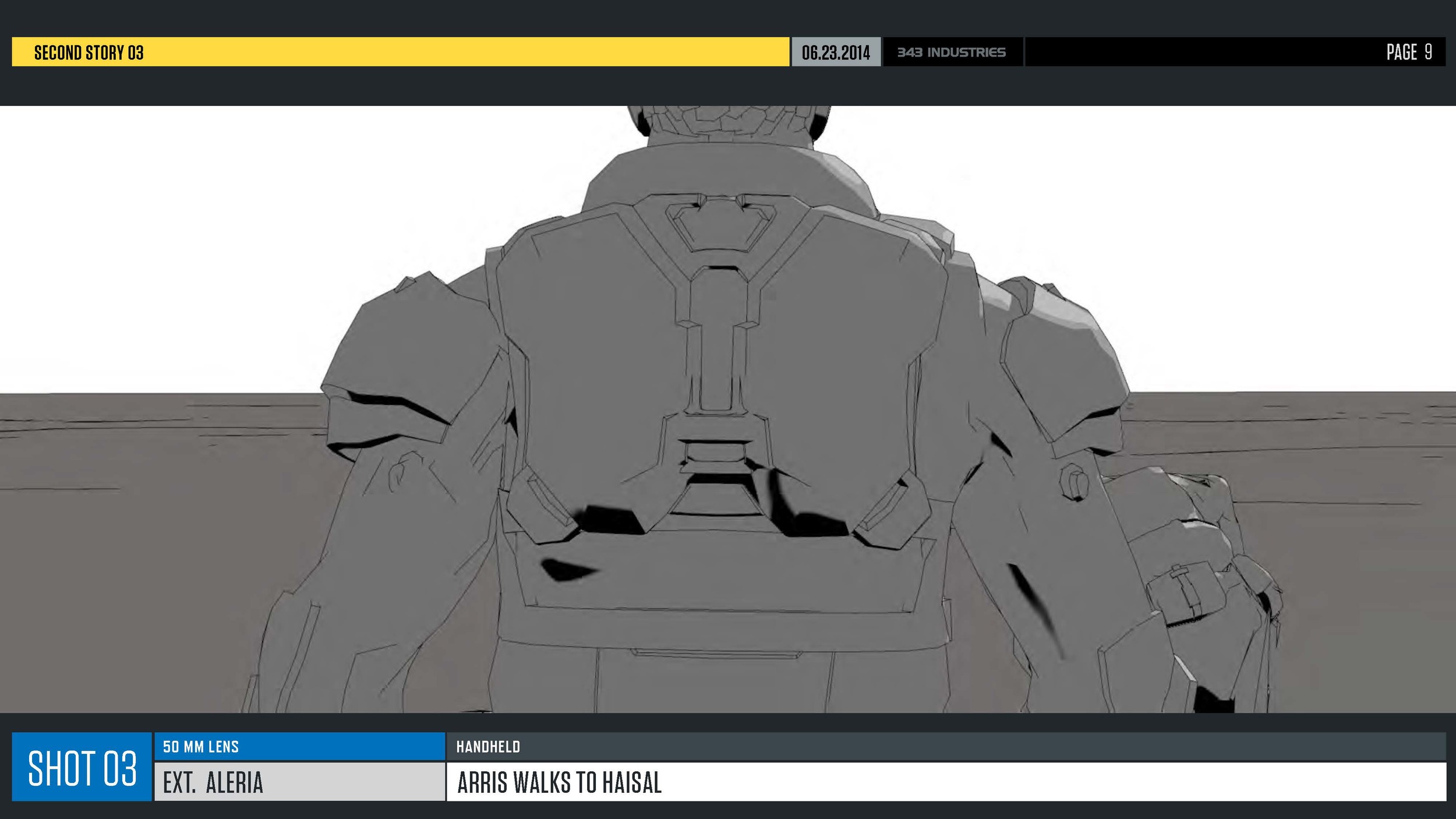
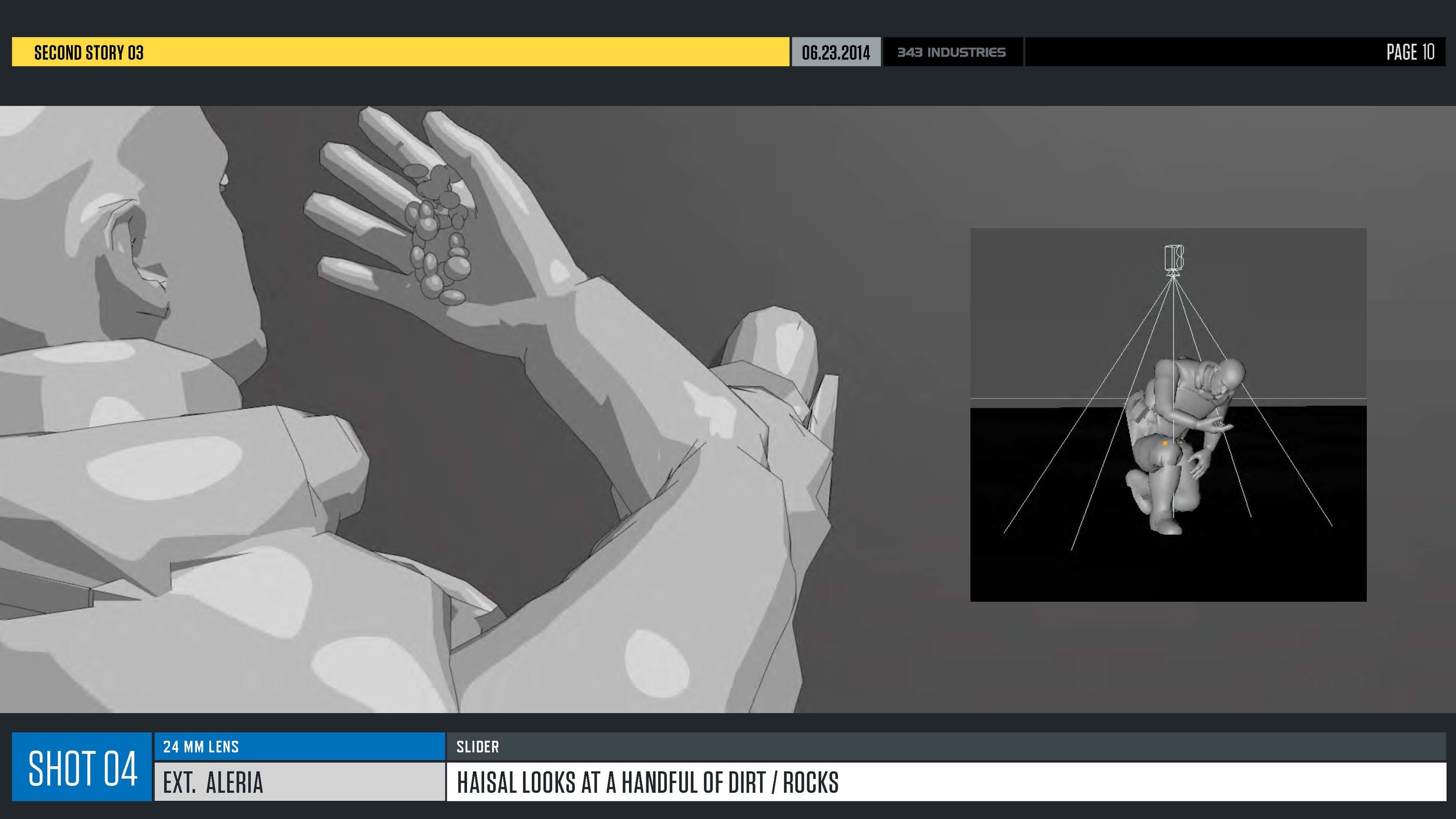




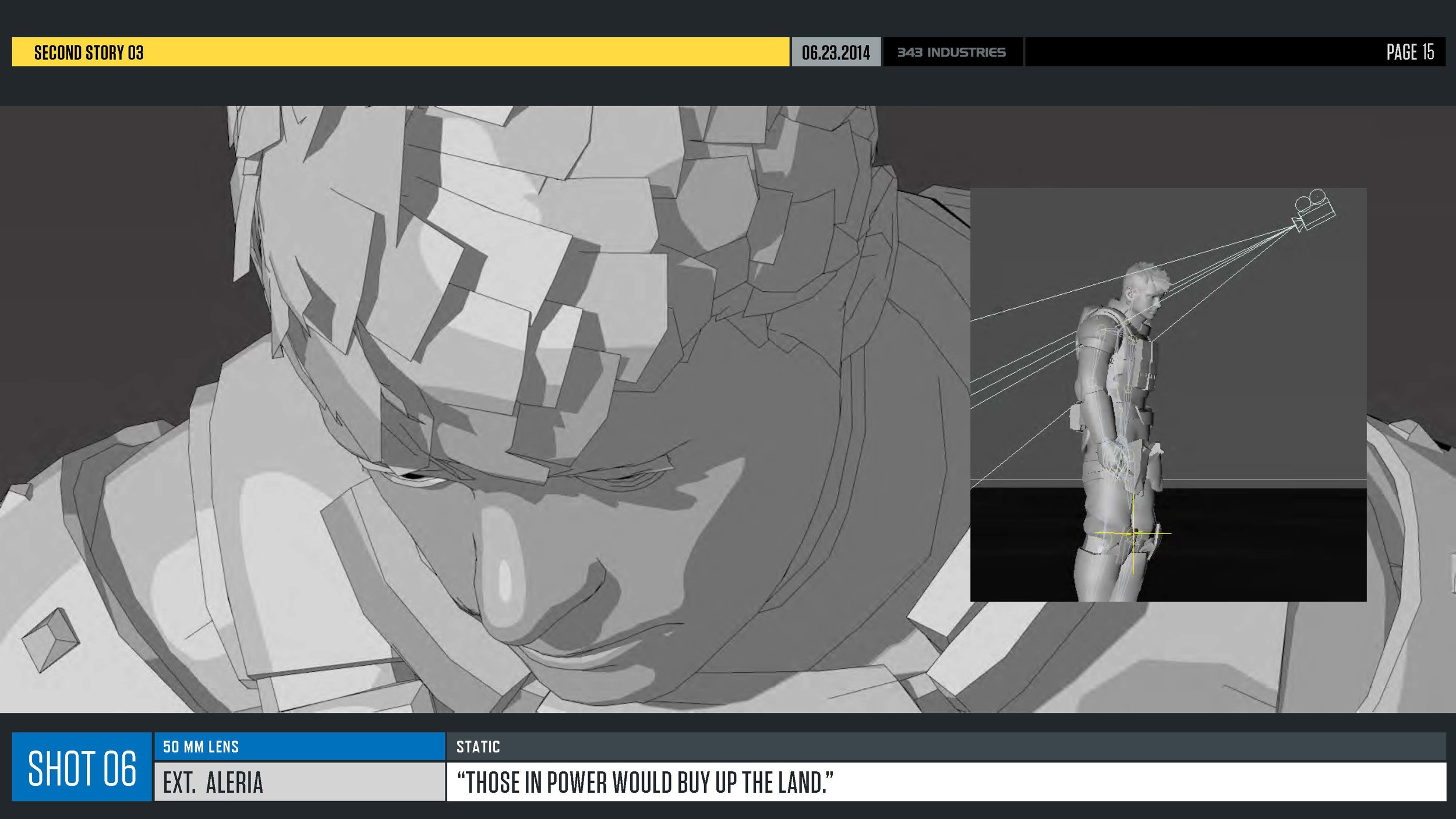



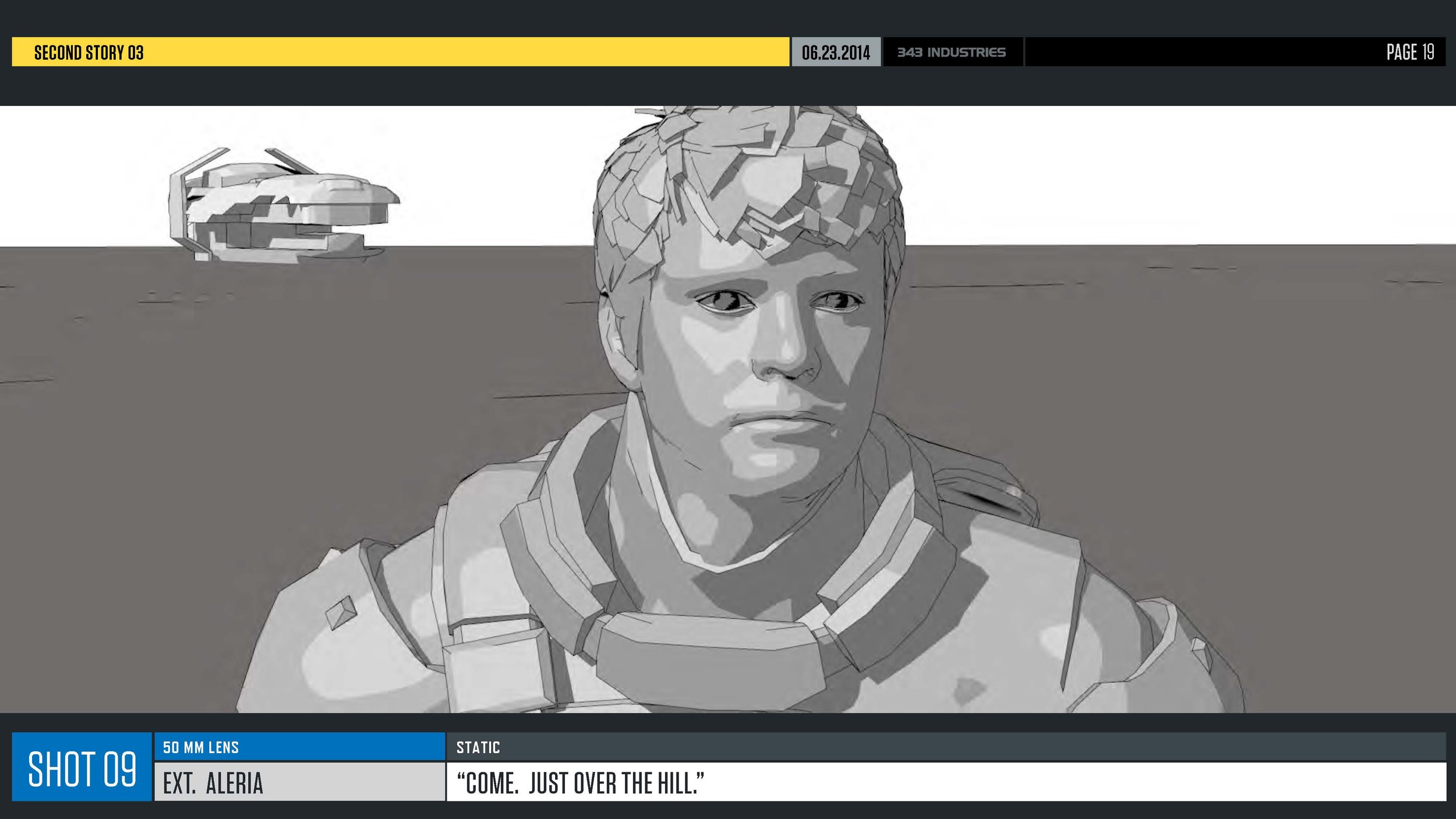






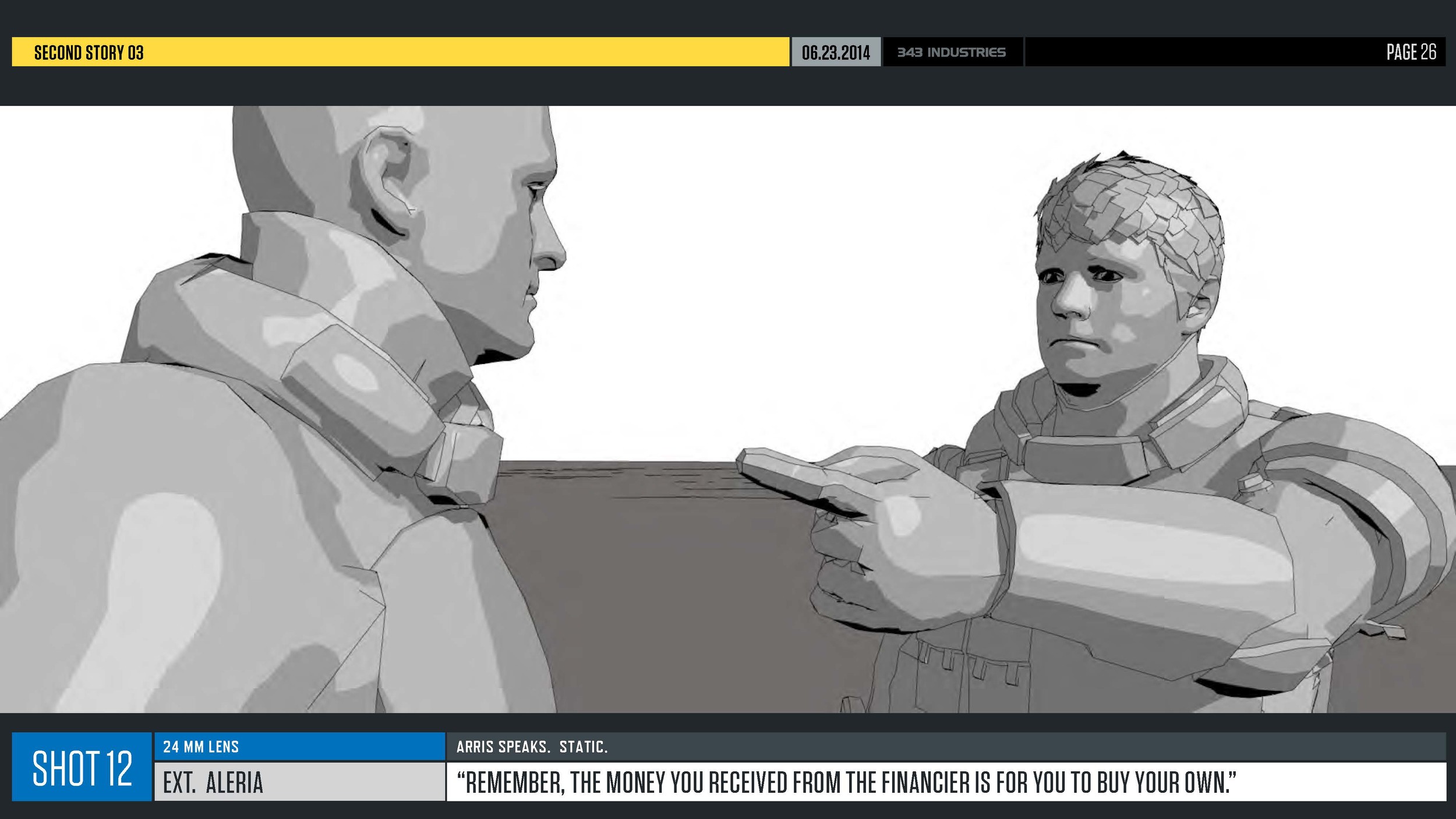













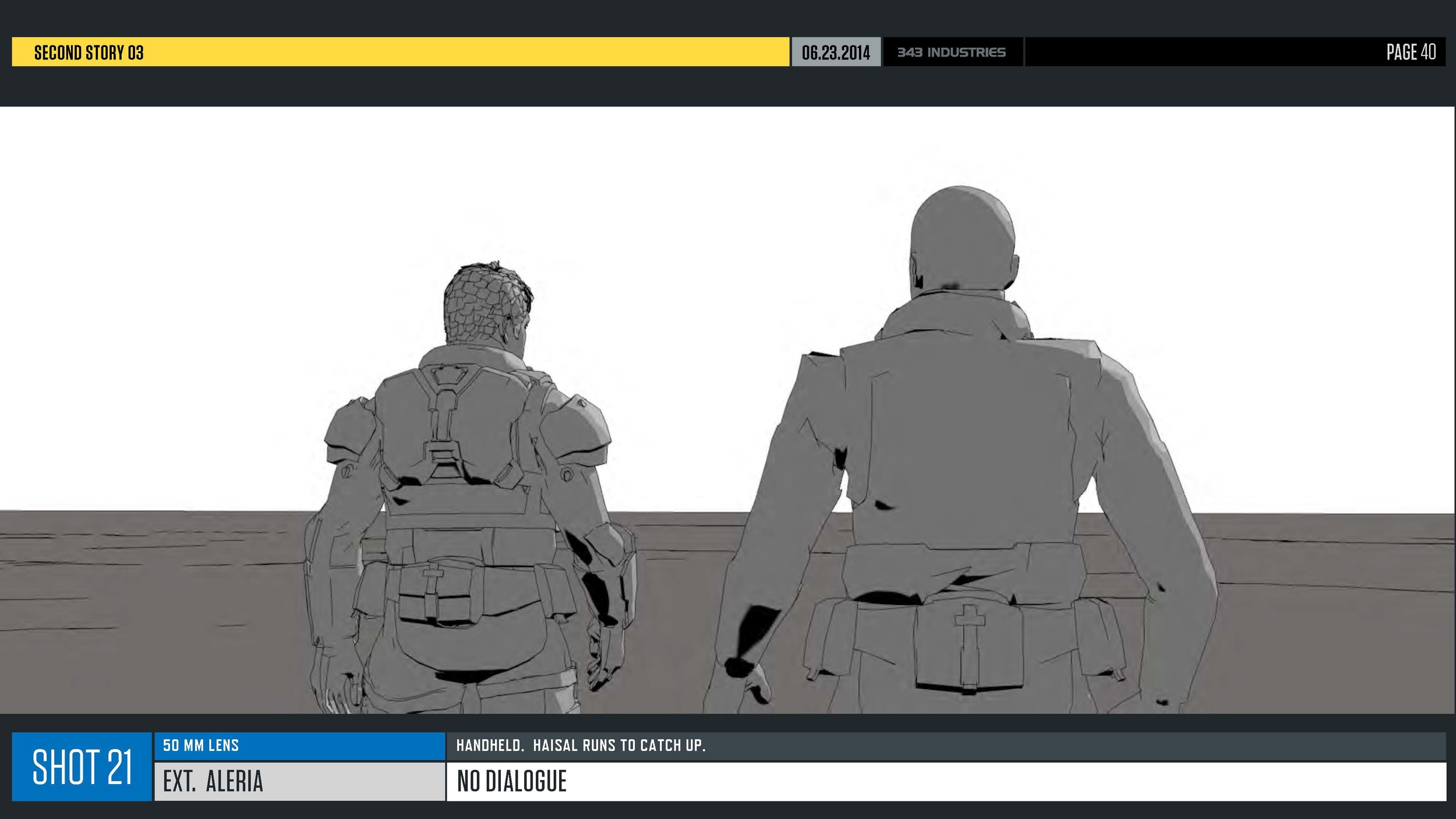




































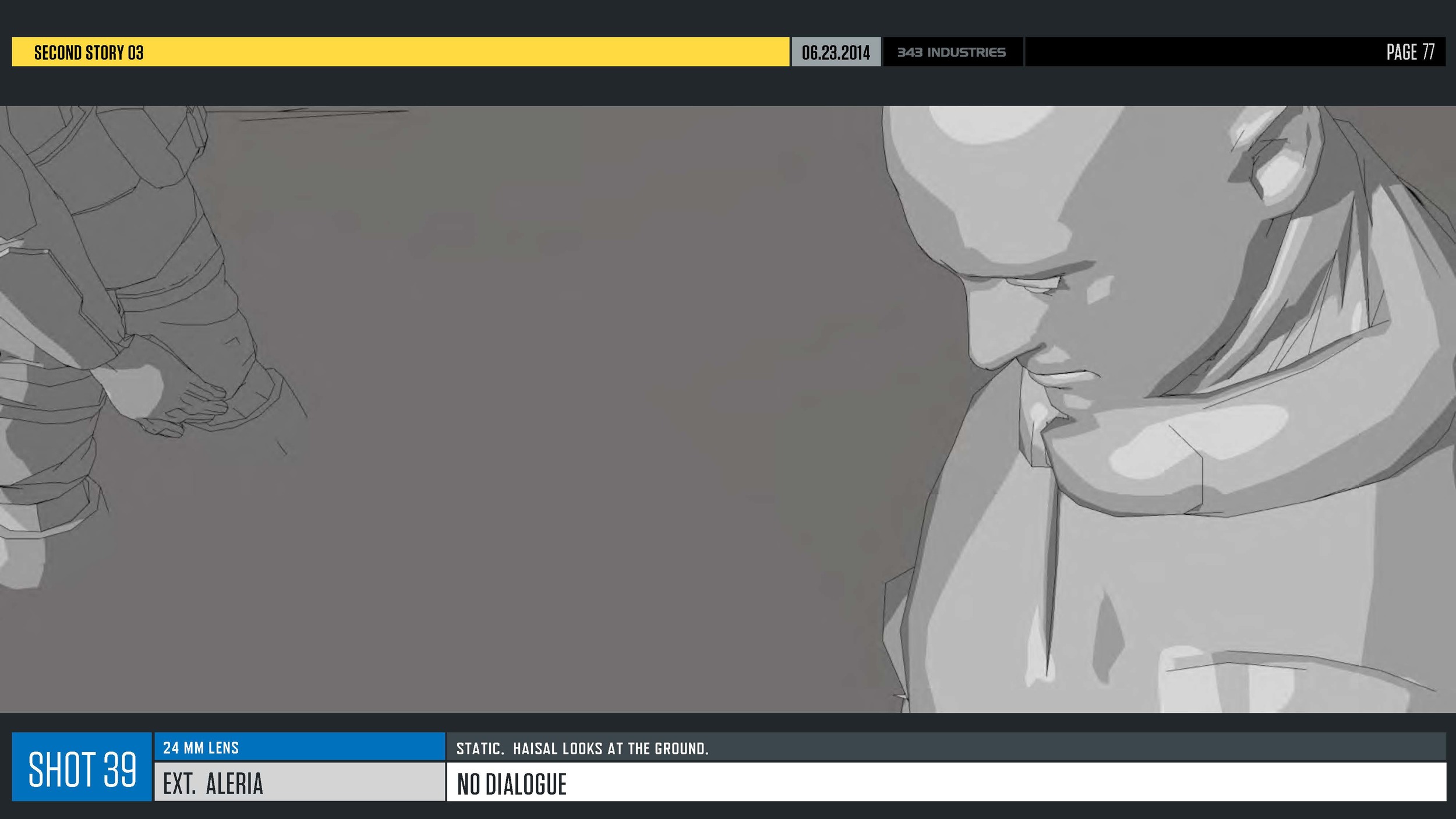


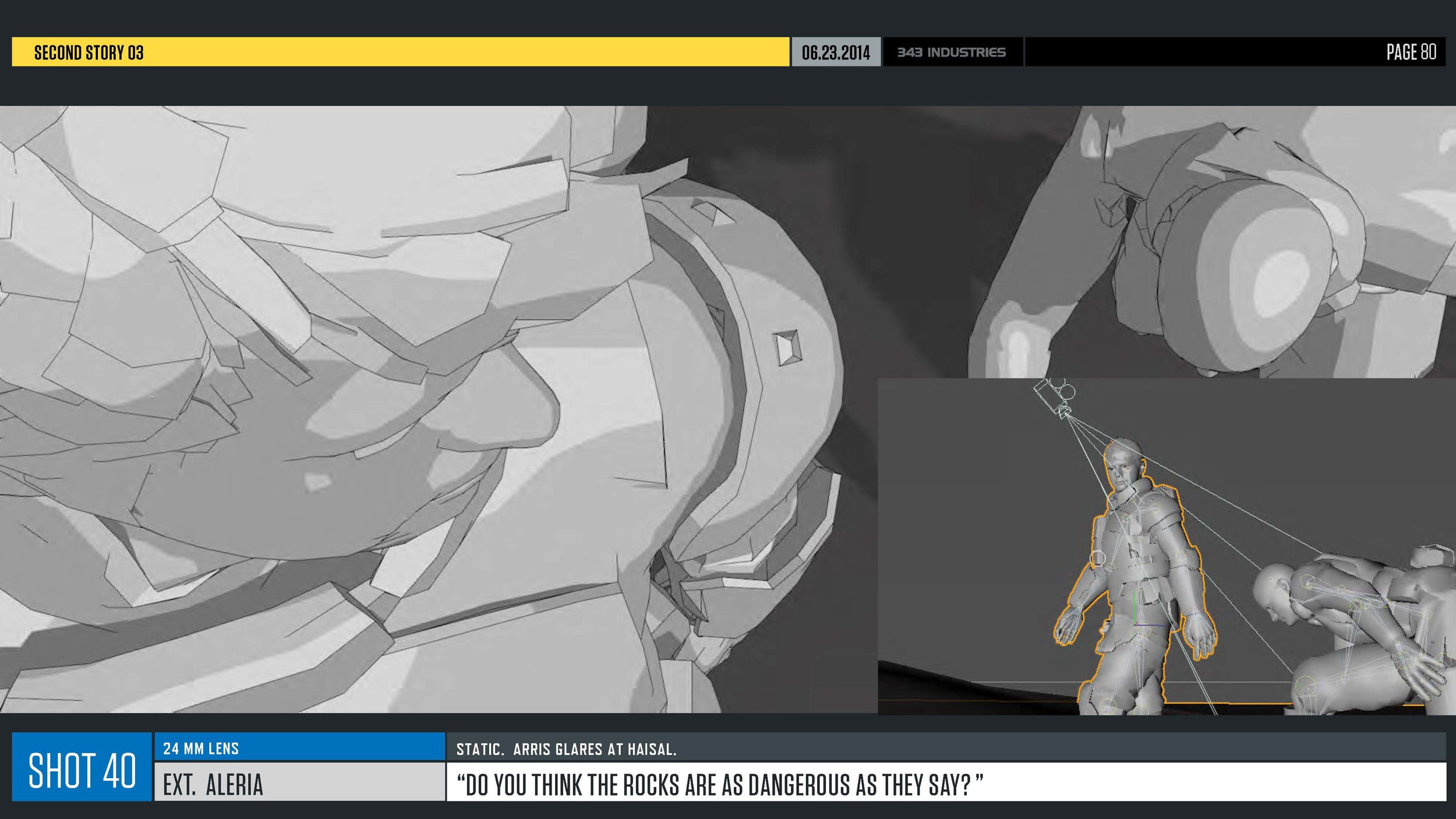






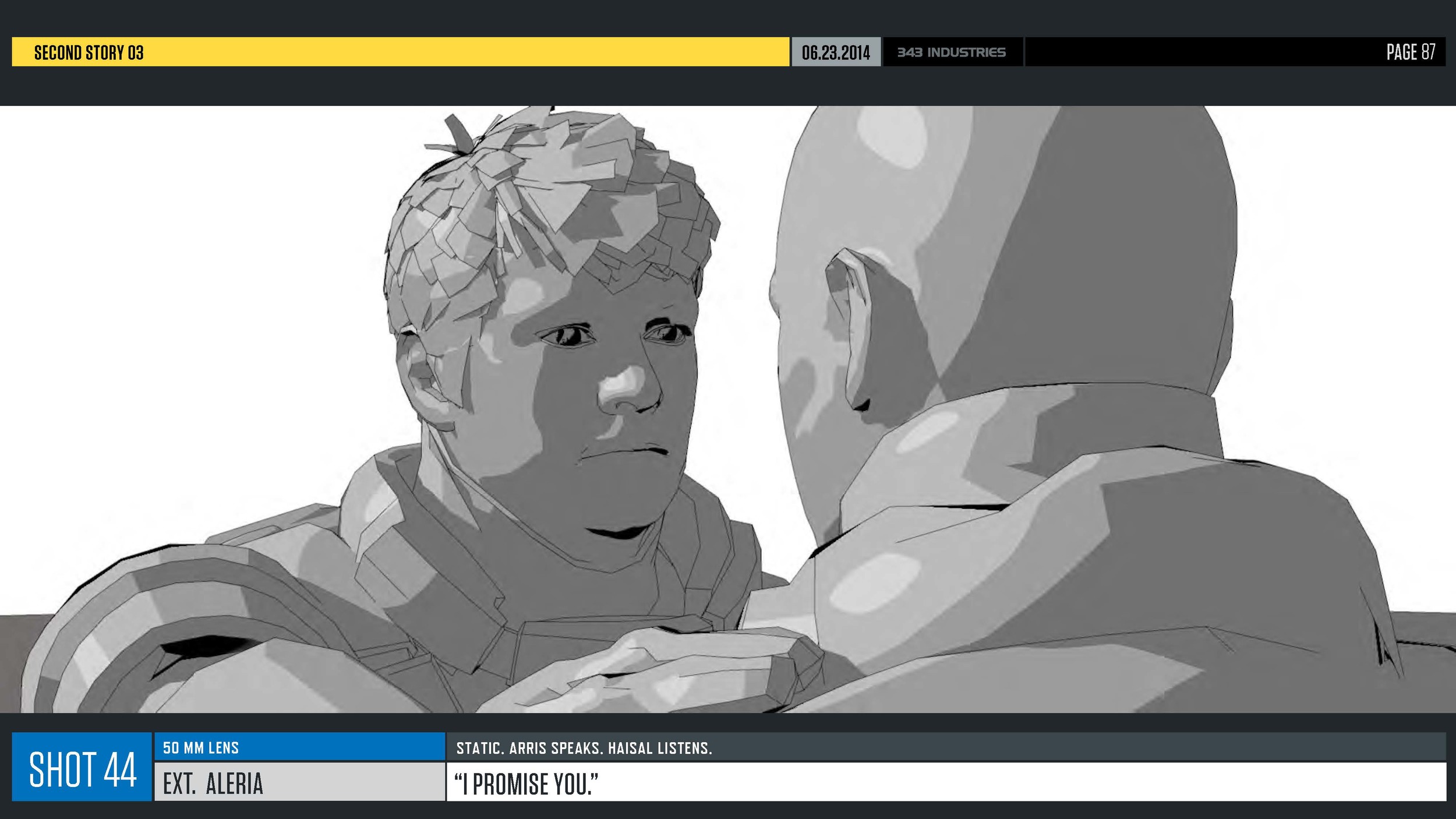



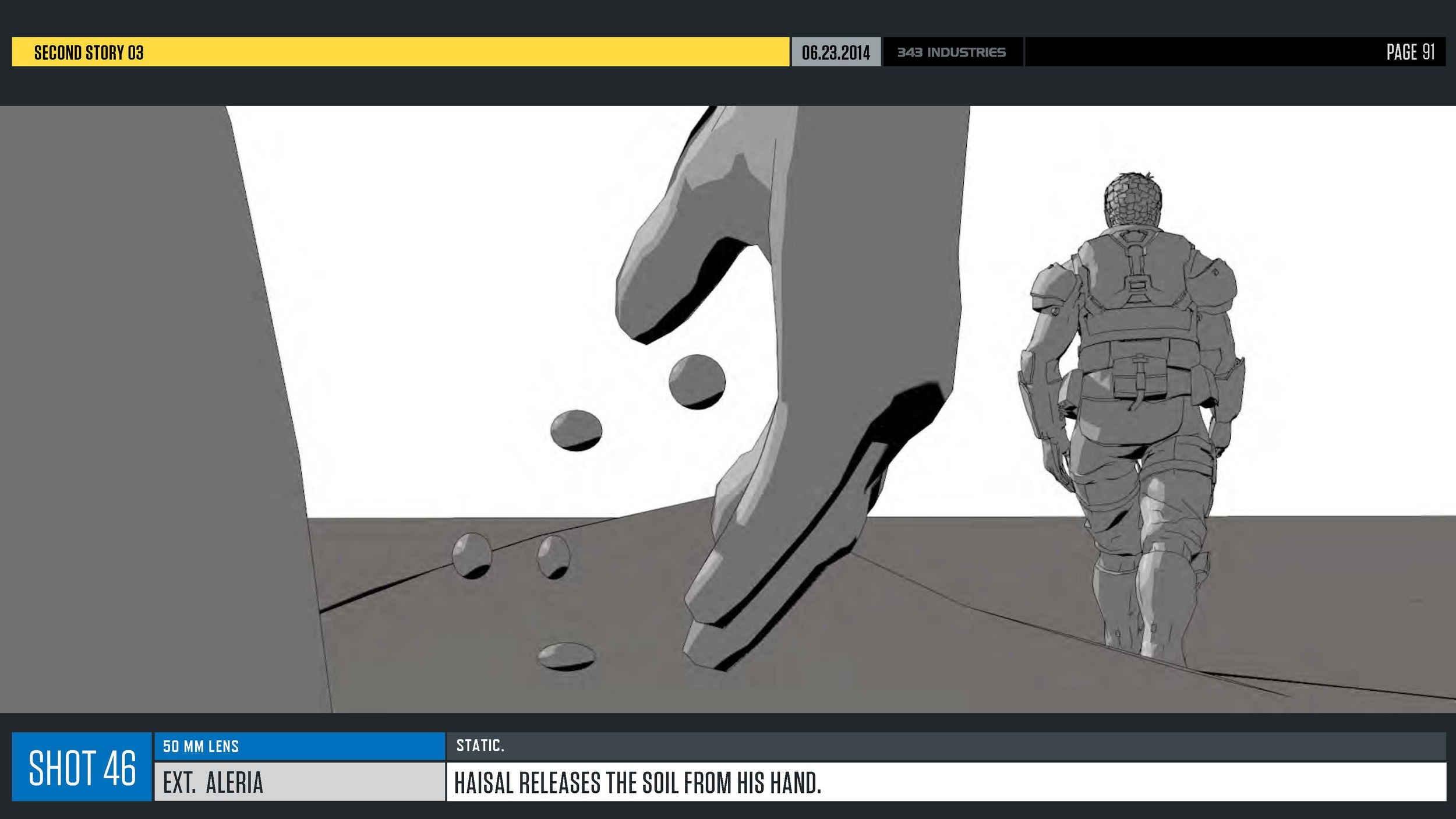

Indebted Travelers Storyboards
Behind the Scenes
The storyboards were created in Cinema 4D. Some include virtual camera placement since we had 3 hours to try and shoot 4 pages of the script.

